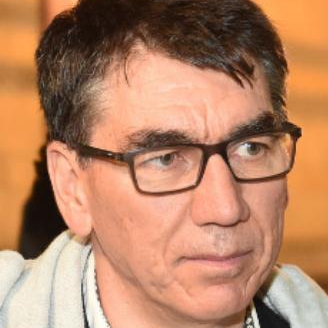Polymer Materials Under Extreme Conditions
A special issue of Polymers (ISSN 2073-4360). This special issue belongs to the section "Polymer Applications".
Deadline for manuscript submissions: closed (20 June 2021) | Viewed by 8936
Special Issue Editors
Interests: fire behavior; flame retardants; degradation; polymeric materials; fire safety engineering; polymers; materials chemistry; polymer blends; pyrolysis; ionizing radiation
Special Issues, Collections and Topics in MDPI journals
Interests: flame retardancy; fire behavior; thermal degradation of polymers
Special Issues, Collections and Topics in MDPI journals
Interests: flame retardancy; thermal degradation; biobased flame retardants; biopolymers; aging of flame retardant and polymers; fiber-reinforced composites
Special Issues, Collections and Topics in MDPI journals
Special Issue Information
Dear Colleagues,
Polymer materials are nowadays used in various applications, ranging from daily life products to high-tech devices. Although their environmental impact is a great concern, they will remain extensively used, thanks to their numerous properties and their high versatility. In some cases, they can be exposed to extreme conditions, whether these conditions are encountered during the service life or accidental (for example, fire). These conditions threaten the integrity of the material and its ability to maintain the functionality. They may include heat and fire, high mechanical stress, various radiations exposure, high pressure, immersion or contact with water or various liquids, etc. A better understanding of the material behavior under these conditions will help to design advanced high-resistant materials.
This Special Issue aims to gather high quality papers which focus on 1) the behavior of polymers under various extreme conditions, 2) the strategies maintaining/extending the functional properties of polymers under the aforementioned extreme conditions, 3) the strategies restoring the material properties after exposure to extreme conditions.
Dr. Rodolphe Sonnier
Dr. Laurent Ferry
Dr. Henri Vahabi
Guest Editors
Manuscript Submission Information
Manuscripts should be submitted online at www.mdpi.com by registering and logging in to this website. Once you are registered, click here to go to the submission form. Manuscripts can be submitted until the deadline. All submissions that pass pre-check are peer-reviewed. Accepted papers will be published continuously in the journal (as soon as accepted) and will be listed together on the special issue website. Research articles, review articles as well as short communications are invited. For planned papers, a title and short abstract (about 100 words) can be sent to the Editorial Office for announcement on this website.
Submitted manuscripts should not have been published previously, nor be under consideration for publication elsewhere (except conference proceedings papers). All manuscripts are thoroughly refereed through a single-blind peer-review process. A guide for authors and other relevant information for submission of manuscripts is available on the Instructions for Authors page. Polymers is an international peer-reviewed open access semimonthly journal published by MDPI.
Please visit the Instructions for Authors page before submitting a manuscript. The Article Processing Charge (APC) for publication in this open access journal is 2700 CHF (Swiss Francs). Submitted papers should be well formatted and use good English. Authors may use MDPI's English editing service prior to publication or during author revisions.
Keywords
- polymer
- ageing
- fire
- flame, heat
- radiation
- immersion
- mechanical stress
- weathering








